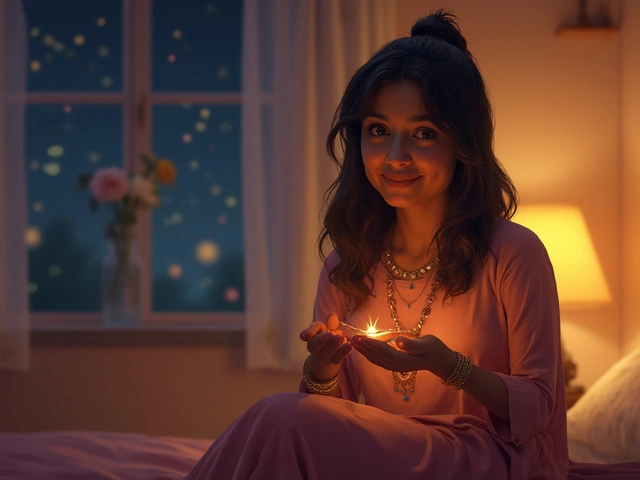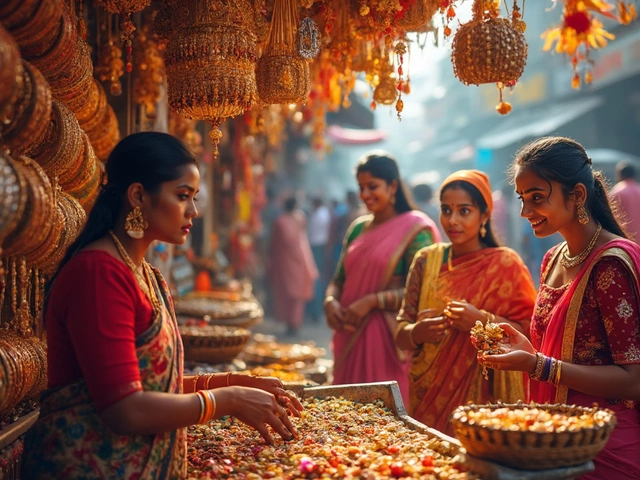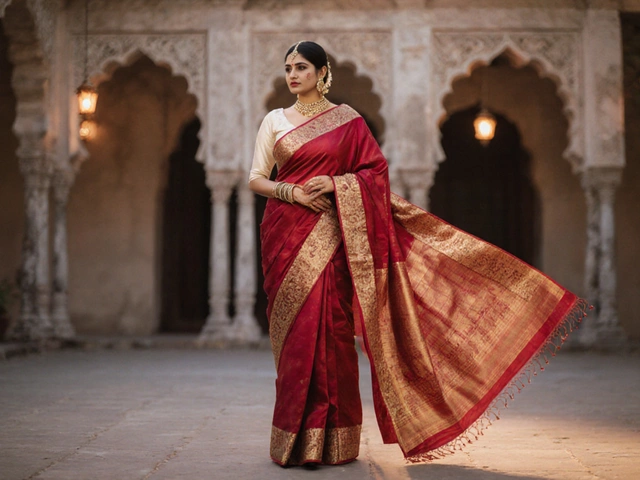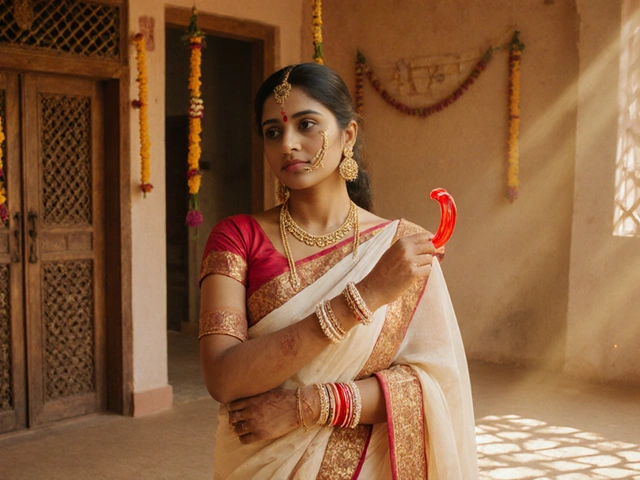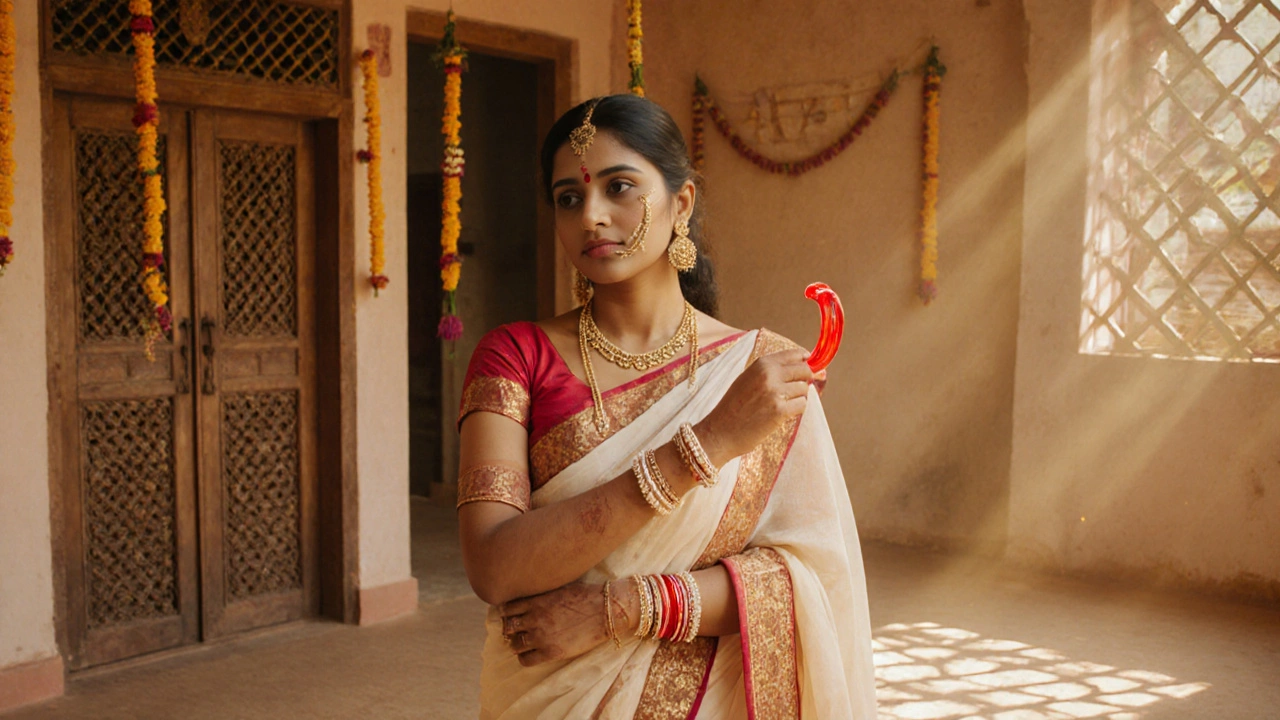
Red Bangles Cultural Guide
Cultural Insights
Select a region and marital status to see cultural insights about red bangles.
Red Bangles
Symbolizes prosperity and marital status. Traditionally worn by married women in North India.
Gold Bangles
Represents wealth and purity. Commonly worn by unmarried women across all regions.
Regional Differences
North India
Strong association with marriage. Unmarried girls typically avoid red bangles.
West India
Red bangles are common during festivals regardless of marital status.
South India
Red bangles are part of teenage fashion and not exclusively linked to marriage.
East India
Red bangles are worn during festivals like Durga Puja by unmarried women.
When you see a splash of red on a wrist, the first thought is often a bride’s bangles, a symbol of married life. But what happens when an unmarried girl wants to wear that same shade? This question pulls together history, regional customs, and today’s fashion‑forward mindset. Below we unpack the origins of red bangles, the traditional rules, the variations across India, and practical tips for anyone who wants to rock the colour without breaking cultural etiquette.
What Are Red Bangles?
Red Bangles is a traditional Indian wrist accessory made of glass, lacquered metal or stone, cherished for its bright colour and symbolic meaning. Historically they have been part of both everyday wear and special ceremonies, and their hue carries layers of cultural baggage-from fertility to auspiciousness.
The Historical Roots of Red Bangles
Red has been a dominant colour in Indian rituals for millennia. Ancient texts like the Rigveda reference red pigments as symbols of life and power. In jewellery, red glass bangles emerged during the Gupta period (4th-6thcenturyCE) and quickly became a staple for women of all ages.
Two key ideas shaped the early perception of red bangles:
- Protection and vitality - Red was believed to ward off evil eyes and bring health to the wearer.
- Marital status marker - Over time, families began reserving bright red bangles for married daughters, linking the colour to the sacred bond of marriage.
These ideas were reinforced by the rise of the Mangalsutra a black‑and‑gold necklace symbolising marital commitment and the daily application of Sindoor the vermilion powder applied to a married woman’s hair part. Together, red bangles completed the visual language of marriage.
Traditional Rules for Unmarried Women
In many North Indian families, the rule is simple: unmarried girls wear simple, often colourless or pastel bangles, while the vibrant red ones are saved for the wedding day. The reasoning is twofold:
- Signalling - Red bangles instantly convey that the woman is married, preventing unwanted proposals.
- Ritual purity - Some communities view the colour as a spiritual charge that should only be taken on after a specific rite (the Satyanarayana ceremony).
These conventions are most rigid among conservative Hindus in Uttar Pradesh, Rajasthan, and parts of Gujarat. However, they are less strict in South Indian states, where colour varies more widely and red bangles can be part of a teenage girl’s casual jewellery box.
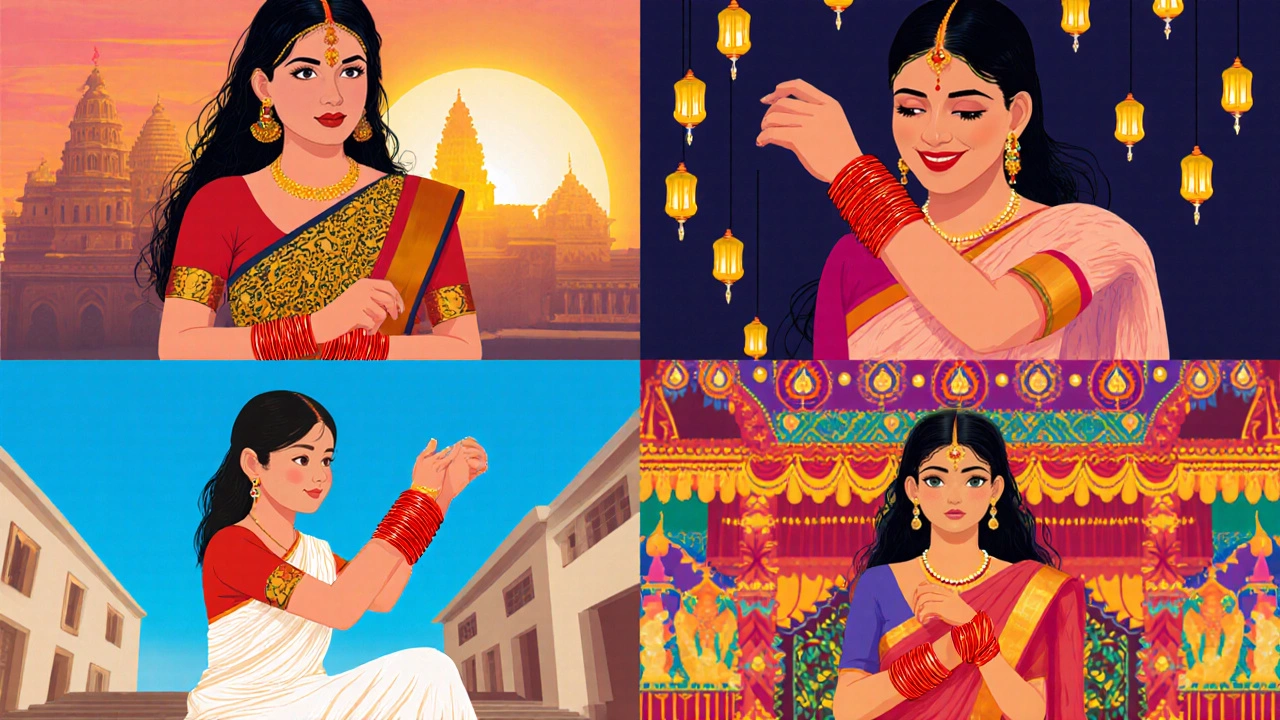
Regional Variations Across India
India’s cultural mosaic means the red‑bangle rule is not universal. Below is a quick snapshot of how different regions treat the tradition:
- North India - Strong association of red bangles with marriage; unmarried girls typically wear gold or ivory bangles.
- West India (Maharashtra, Gujarat) - Red bangles are common during festivals like Navratri regardless of marital status.
- South India (Tamil Nadu, Kerala) - Red glass bangles are worn by teenage girls as a fashion statement; marriage isn’t the sole trigger.
- East India (Bengal, Odisha) - “Palki a set of multi‑coloured bangles” often includes a single red bangle for unmarried women during Durga Puja.
- Nepal & Bhutan - Red bangles are part of everyday wear for women of all ages, less tied to marital norms.
These differences arise from local myths, climate (bright colours suit sunny regions), and the influence of community leaders.
Modern Reinterpretations: Fashion Meets Tradition
Today’s globalised world is reshaping old rules. Indian designers on platforms like Instagram and TikTok showcase red bangles on single professional women, positioning them as “empowerment accessories.” A 2023 survey by the Indian Fashion Council found that 38% of urban women aged 18‑30 felt comfortable wearing red bangles regardless of marital status.
Why the shift?
- Self‑expression - Younger generations view jewellery as a personal style choice, not a status badge.
- Commercial availability - Mass‑produced glass bangles are affordable, making them a staple rather than a ceremonial luxury.
- Cross‑cultural influence - Bollywood movies now feature single heroines in red bangles, normalising the look.
That said, family expectations still matter in many households. If you’re navigating a traditional environment, a subtle approach-pairing a red bangle with neutral ones-often eases tensions.
How to Wear Red Bangles When Unmarried
If you’ve decided to wear red bangles, here’s a practical guide to keep your look chic and culturally sensitive:
- Mix colours: Pair a single red glass bangle with gold or ivory bangles. The contrast signals style rather than marital intent. \n
- Choose the right material: Opt for lightweight glass or alloy bangles for daily wear. Heavy gold pieces are typically reserved for married women.
- Match the occasion: Red bangles shine at festivals, weddings (as a guest), or cultural events. For office settings, limit to one thin red bangle.
- Mind the size: Ensure the bangle fits snugly but can slide off easily. Traditional married bangles are tighter, so a looser fit subtly differentiates status.
- Combine with other symbols: Avoid pairing red bangles with a Mangalsutra marriage necklace traditionally worn after the wedding ceremony or permanent sindoor, as that creates mixed signals.
These tips let you celebrate the colour while respecting cultural nuances.

Common Misconceptions & Quick FAQs
Below is a concise table that clears up the most frequent doubts about red bangles for unmarried women.
| Colour | Cultural Acceptance (Traditional) | Typical Symbolism | Best Use Cases (Unmarried) |
|---|---|---|---|
| Red | Medium‑high in South, low in North | Prosperity, marital status cue | Festivals, fashion statements, mixed‑bangle sets |
| Gold | High across regions | Wealth, purity | Everyday wear, formal events |
| Ivory/White | Very high | Innocence, simplicity | Casual outings, workplace |
| Silver | Moderate | Modernity, versatility | Night outings, contemporary looks |
Practical Tips for Family Conversations
When you’re living with relatives who hold traditional views, a respectful conversation goes a long way. Here’s a short script you might use:
“I love our cultural heritage, and I respect the meaning behind red bangles. I’d like to wear a single red glass bangle for the upcoming festival as part of my outfit. It’s a small piece that doesn’t replace any traditional symbols.”
By acknowledging the tradition first, you show that your choice is about personal style, not a challenge to customs.
Future Outlook: Will the Rule Fade?
Predicting cultural change is tricky, but the trend points toward a more flexible approach. Younger Indian families are increasingly global, and many parents now view jewellery as an expression of individual taste. As long as designers keep producing affordable red bangles and media continues to showcase single women in them, the stigma will keep loosening.
In the next decade, we might see red bangles listed alongside “casual accessories” in retail catalogs, rather than being siloed under “wedding jewellery.” Until then, understanding the regional context remains essential.
Frequently Asked Questions
Is it disrespectful for an unmarried girl to wear red bangles during a wedding?
In most North Indian families, it can be seen as breaking etiquette because red bangs are associated with married women. However, if you wear just one thin glass bangle and pair it with neutral ones, many hosts consider it acceptable, especially in mixed‑regional gatherings.
Can I wear red bangles at work?
Yes, as long as the design is modest. A single slim glass bangle or a set of thin red‑accented bangles blends well with corporate attire and usually doesn’t raise eyebrows.
Do red bangles have any health benefits?
Traditional belief holds that red, the colour of life force, can boost vitality and protect against negative energies. While scientific proof is limited, many wearers report feeling more confident and energized.
What material should I choose for daily wear?
Lightweight glass or alloy (like copper alloy) bangles are ideal for everyday use. They’re gentle on the wrist and easy to replace if broken.
Are there any festivals where red bangles are especially encouraged?
Yes. Navratri, Durga Puja, and regional new‑year celebrations often feature red bangles as part of the festive attire, regardless of marital status.

